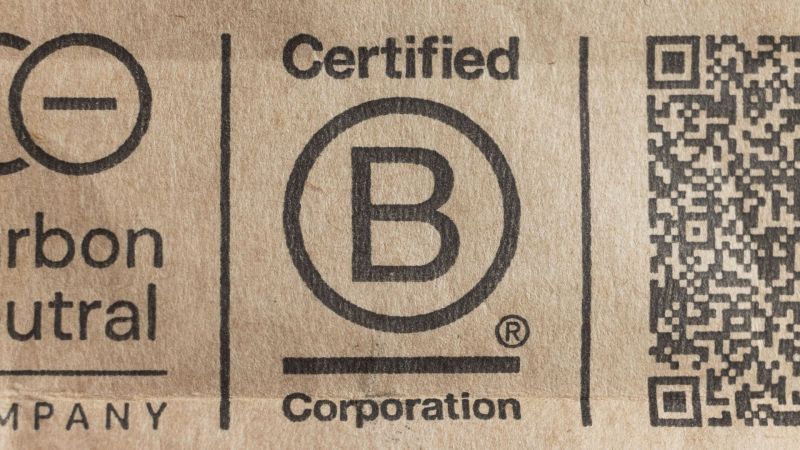Sniffing Out Tweets that Fail the Green Smell Test
A linguistic-based tool explores the financial cost of using social media for greenwashing

As you scroll through your Twitter feed, you’ll likely come across companies boasting about their green products and initiatives. While their tweets appear believable, it can be hard separating a truthful environmental claim from rank greenwashing.
A new linguistic-based tool, however, promises to make that job easier. And it also promises to help tease out whether companies take a financial hit from faking their green messaging.
Divinus Oppong-Tawiah, MSc'14, an assistant professor at Schulich School of Business, co-developed the Twitter tool with Jane Webster of Smith School of Business, as part of their broad research program on the sustainable use of information systems by organizations.
He says they wanted to study greenwashing from both the consumer’s perspective as well as the company’s — specifically, the impact false environmental claims can have on a firm’s share price.
“We wanted to find out how we can reduce this dependence on humans . . . and allow customers to make judgments about whether firms are greenwashing by looking at the text itself,” says Oppong-Tawiah, who earned a Master of Science in Management degree at Smith School of Business. “(Additionally), the whole point of identifying greenwashing from an organizational perspective is to figure out whether it has bottom-line implications that organizations should care about.”
Revealing words
To collect their data, Oppong-Tawiah and Webster studied the Twitter accounts of 57 publicly traded companies in the oil and gas and automotive industries, focusing on more than 80,000 environmental tweets posted by the companies between 2012 to 2019.
Drawing from existing psychology research on deceptiveness, they identified multiple linguistic traits that could be clues to whether text within a tweet was truthful or deceptive. Oppong-Tawiah says psychology studies have shown, for example, that people who lie tend to say very little and can be intentionally vague. Therefore, when a company tweets a message that is intended as greenwashing, it would likely feature fewer words and less specific information.
They then used software to identify tweets with these and other linguistic characteristics and ranked how far the messages deviated from the linguistic profile of an ideal non-deceptive tweet.
Their study used multiple, independent techniques to validate whether the linguistic-based tool identified tweets with a higher likelihood of greenwashing. They compared their results, for example, with ratings by greenwashing experts on Twitter, such as Extinction Rebellion and Greenpeace, and found a high correlation.
Oppong-Tawiah says determining greenwashing faces obstacles like those that make exposing fake news online so difficult. The tool, however, could help people do a better job of detecting deception in tweets — something that most of us have a hard time doing. “Research has shown that we can only detect lies about 50 per cent of the time,” he says. “When we depend on people to make inferences, there’s always a challenge that we might get it wrong.”
Impact on share price
While such a tool could be useful for consumers who are sensitive to environmental issues, there is still the question of whether firms are penalized for their greenwashing communications. Turns out the researchers have a tentative answer.
For the firms in their study, Oppong-Tawiah and Webster collected financial performance data, including daily share prices. In addition, they included environmental data from Sustainalytics for each firm, specifically ESG (environment, social and governance) information on publicly exposed incidents, such as media reports about firms’ oil spills. They then compared these datasets with the companies’ environmental-related tweets between 2012 and 2019.
That’s when a potential link between greenwashing and financial market performance appeared: when tweets included greenwashed statements, firm share prices appeared to go down.

“The drop in share prices correlated with higher levels of greenwashing identified in the firms’ tweets,” says Oppong-Tawiah, cautioning that this connection is “exploratory” rather than an established finding. “We need a lot more studies to be concrete about what’s happening here.”
Surprisingly, the researchers found that firms with fewer reported environmental incidents seemed to suffer a steeper drop in share prices when they engaged in greenwashing. But when companies greenwashed in the middle of a public environmental incident, their share prices rose. Oppong-Tawiah isn’t sure why this occurs, but he has theories.
“Large firms with operations in several regions may be able to offset negative exposure in one region with greenwashing in another, thereby blocking a direct impact on their overall market performance,” he explains. “In contrast, firms with smaller operational footprints may face unduly harsh ramifications for greenwashing even if they are involved in fewer controversies. It could also be that larger firms have more tangible and intangible resources at their disposal to mitigate the negative effects of greenwashing on their market performance.”
Helping companies communicate
Oppong-Tawiah says that a tool that can identify whether a social media post is untrue could help companies that are holding back information about their green initiatives for fear of being accused of lying.
“We are predisposed to be distrustful because firms are profit-motivated,” he says. “So there’s this tension regarding communications about green practices, and whether and how companies should disclose their sustainable actions. (But) there’s now an avenue available for us to check independently of any human involvement. This tool can help show they’re not greenwashing.”
Oppong-Tawiah stresses that the development of the Twitter tool is still in its infancy, and he hopes there will be more studies examining greenwashing across other social media platforms and its impacts on consumers and financial market performance.
“This is one chapter of a big story.”





